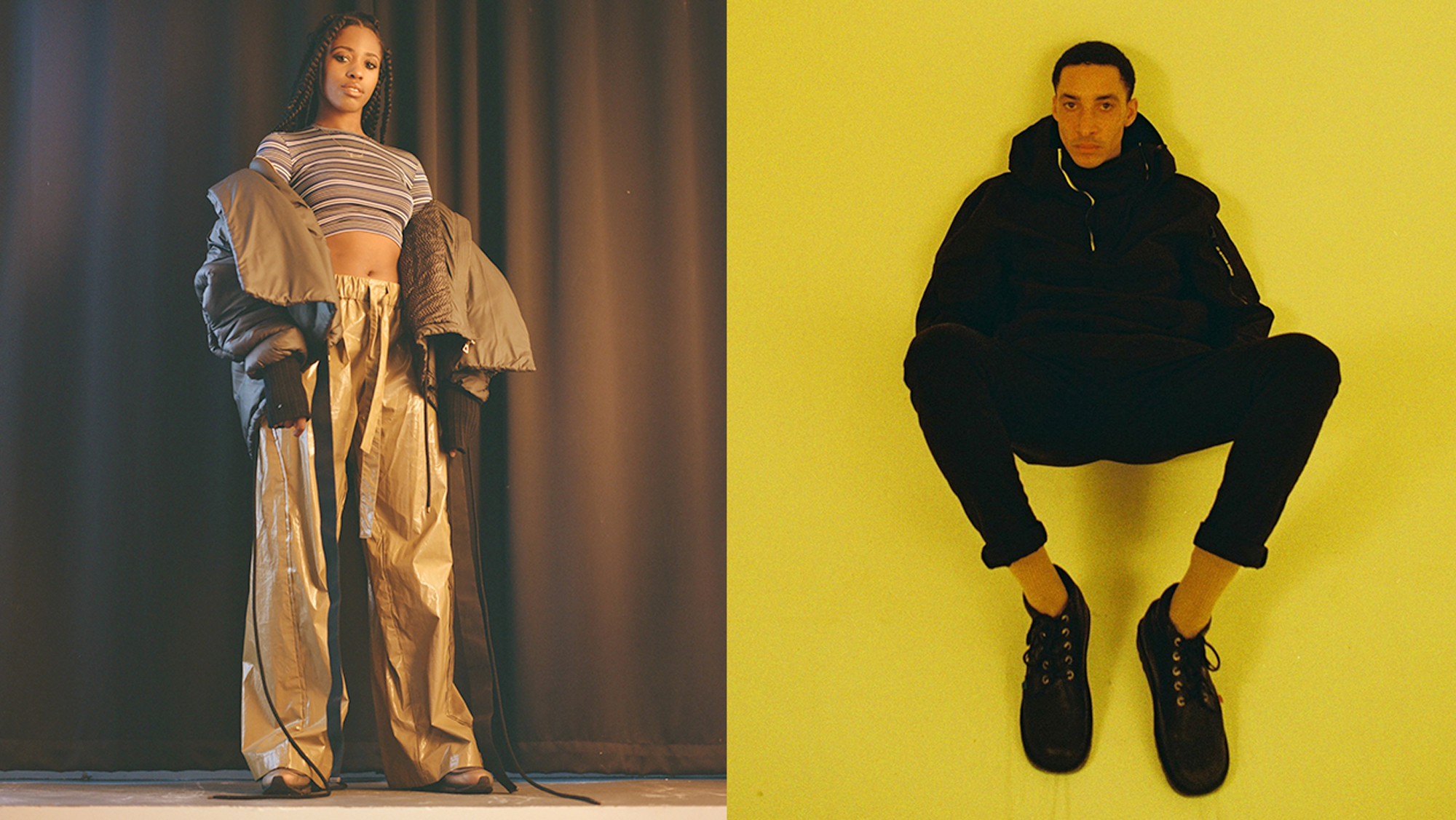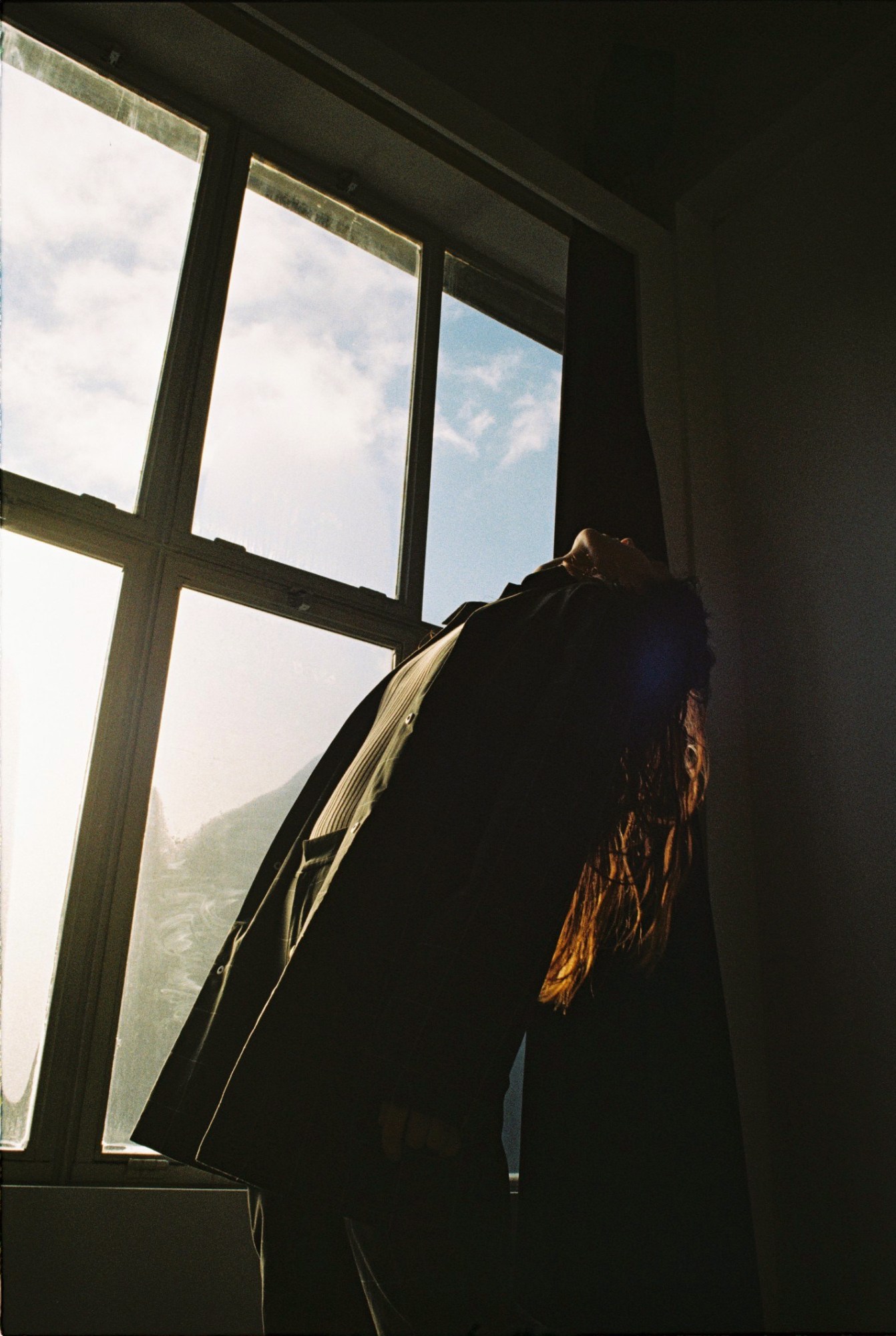
Franziska Aigner
Anne Imhof’s Faust was the Golden Lion winning sensation at 2017’s Venice Biennale; an operatic performance piece channelling disaffection and alienation. A zoological S&M social media frenzy of dobermans and dancers, leather and sportswear. The star though, wasn’t Anne, but the group of performers she assembled to front up to the public day in, day out. One of those was Austria-born Franziska Aigner, a philosophy PhD student and performance artists living and studying in London. Her father was a fashion photographer, and they divided their time between an old house in Salzburg and Milan. One of her earliest art experiences, coincidentally, was a production of Faust in Vienna, starring Bruno Ganz, which lasted 21 hours over two days. “It was the first time that I felt that, I, as a spectator, could share in the mimetic experience of the actors and performers and transcend the first layer of representation,” she explains, of the production’s impact on her. The Faust myth, which usually features an intellectual making a pact with the devil for unlimited power in exchange for his soul, wasn’t rendered so straightforwardly in Anne’s piece. Yet there was something about Imhof’s very modern Faust that struck a chord and resonated. Something inscrutable at the core of the piece; a mood and feeling that made it the most Instagrammed and widely feted artwork of the last few years.
“We managed to create some sort of reflection machine,” Franziska suggests, of why the piece was so popular. “There was something so uncanny about the installation — the way it brought a form of behavior from the side of the visitors to the surface, which had nothing nice about it and nothing kind neither. I believe that once this mode of behavior surfaced in this temple of ‘high art’, everyone was startled by its presence. From then on, Faust was no longer about whatever it was that we, the performers, were doing, or the installation itself. It was about the visitor’s performance, about the way they interacted with it. There was so much pleasure, pain and suffering that surfaced from the side of the audience, but also so much disrespectful behavior and anger. Many of us ended shows feeling shit and a bit terrified by all of it.”
Faust was the culmination and crowning of a series of collaborations that started when Anne and Franziska met five years ago in Frankfurt. They’ve been working together since, along with the rest of the coregroup of performers, Eliza Douglas and Billy Bultheel, and despite the work taking place in Anne’s aesthetic universe, each piece develops out of the collaboration of everyone involved. The Golden Lion came a little out of the blue, but felt like a worthy vindication of a fantastic, singular and modern artistic exploration. “I don’t think I really understood what had happened until way later,” Franziska says of the award. “We were so swept up in all the work that had gone into getting things ready for the opening of the Biennale. After the ceremony, we all went to have coffee in San Marco and then went back to our room, where we lay down, and only half-awake passed the Golden Lion from one to another. We were totally exhilarated but also so tired — I don’t believe we totally understood what had happened.” Text Felix Petty
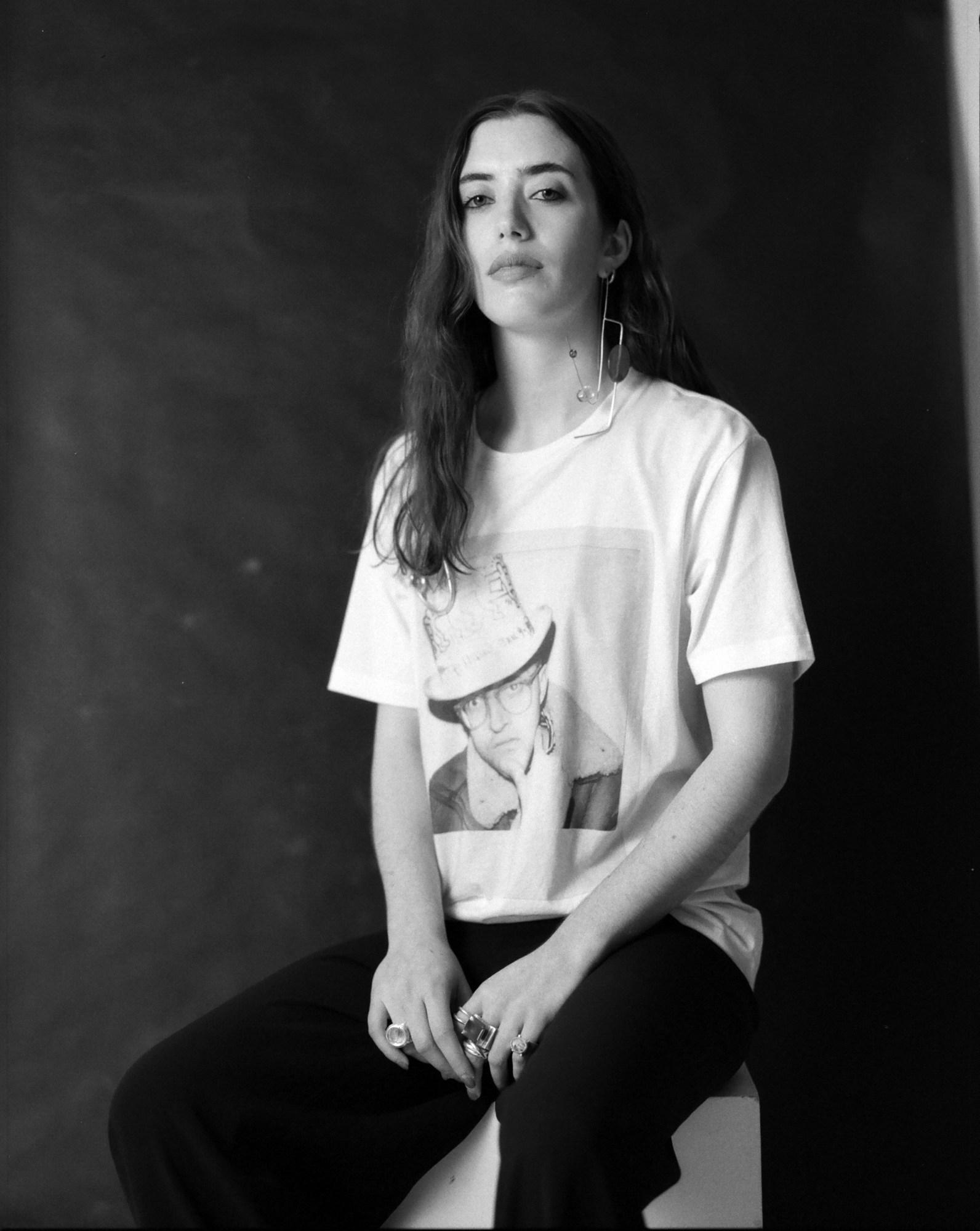
Gala Colivet
Dennison Gala Colivet Dennison was born in Hackney and spent her childhood in rural Normandy. “It was beautiful, bleak and lonely,” she explains. “We had no neighbours. We built an assault course for the wildcats.” The wildcats of Normandy inspired a love of making in Gala, it was also here she first found her love of jewelry. The women in Gala’s life always wore incredible jewelry. Her mum would pick her up from school dripping with Victorian jet necklaces and bangles: “all the kids would cry, they thought she was a witch.” Gala moved to Brighton, then London, where she studied sculpture. It was a natural progression from there to making jewelry. Despite only releasing one collection so far, she’s one of the most in demand and exciting young voices in the jewelry world, appearing everywhere from the pages of Vogue Italia to collaborating with Pringle Of Scotland. “It was a natural progression from art making to jewelry,” she explains. “A lot of it came down to space and scale, but jewelry had always fascinated me, and I approach it from a sculptural, rather than decorative, perspective.”
That sculptural approach lends Gala’s jewelry its dramatic form. Earrings are rich disks of agate come in deep azure blue or long rippling slivers of orange, or Cubist silver heads are embedded with a nugget of amber for an eye. A brooch an abstract, delicate, coil of brass. “As you experiment, your brain joins in and there’s space to be spontaneous — I never know the full outcome of a piece until it’s finished,” Gala explains. “It’s exciting to watch the pieces become complete once worn. I like to think they evoke a feeling or have a story that get reinterpreted by whoever wears them.” Text Felix Petty
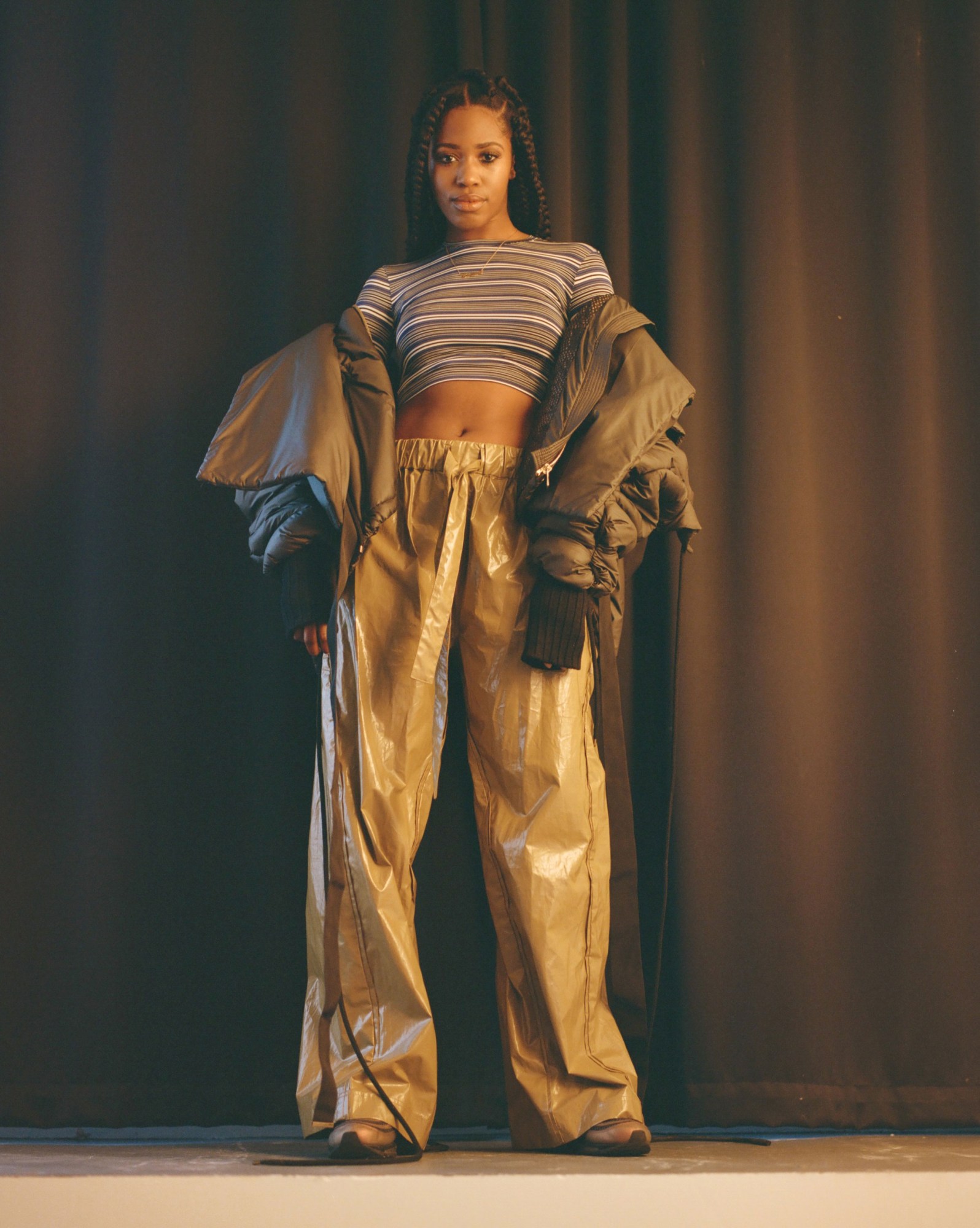
Bianca Saunders
“People ask me why it’s necessary to put myself in my work,” says 25-year-old menswear designer Bianca Saunders. “My work is about being black, which people can find awkward. It’s only made me want to make more of a point of myself.”
Born and bred in south London, Bianca is one of six children. Her parents — both Anglo-Caribbean — divorced when she was little. Bianca had always wanted to work in fashion, but it wasn’t until the last six months of her BA course at Kingston that she considered doing menswear. She began referencing images of her mother’s male cousins and mined the family albums for inspiration. This became the basis of her first collection; a retrospective study of black masculinity told through clothing. It took the Windrush generation’s oversized silhouettes and mixed it with elements of contemporary streetwear. “I’d become fixed on a certain type of black masculinity,” she says, and so she started to observe the subtle ways in which her male friends used fashion as a form of transgression “People keep pushing this whole ‘black guys wearing pink’ thing to make an extreme point about black masculinity,” she says. “I want my work to feel feminine, but still be very strong. Guys need to feel comfortable, not like they’re wearing a dress just to make a statement.”
For any young designer, starting your own label is challenging, especially in the current economic climate. “I keep wondering whether I’m doing the right thing,” Bianca says. “A lot of people in my class are getting jobs. I’m just at home making clothes, which is all well and good, but I still need to make money. I’ve recently received emails about doing shows and showrooms. Where do you expect me to find the money from to do this?” In stark times, creativity flourishes; Bianca is already working on her third collection as well as a some collaborative projects on the side. “I’m excited for my future and scared at the same time,” she says, smiling. “But everyone says that’s the best position to be in.” Text Tish Weinstock
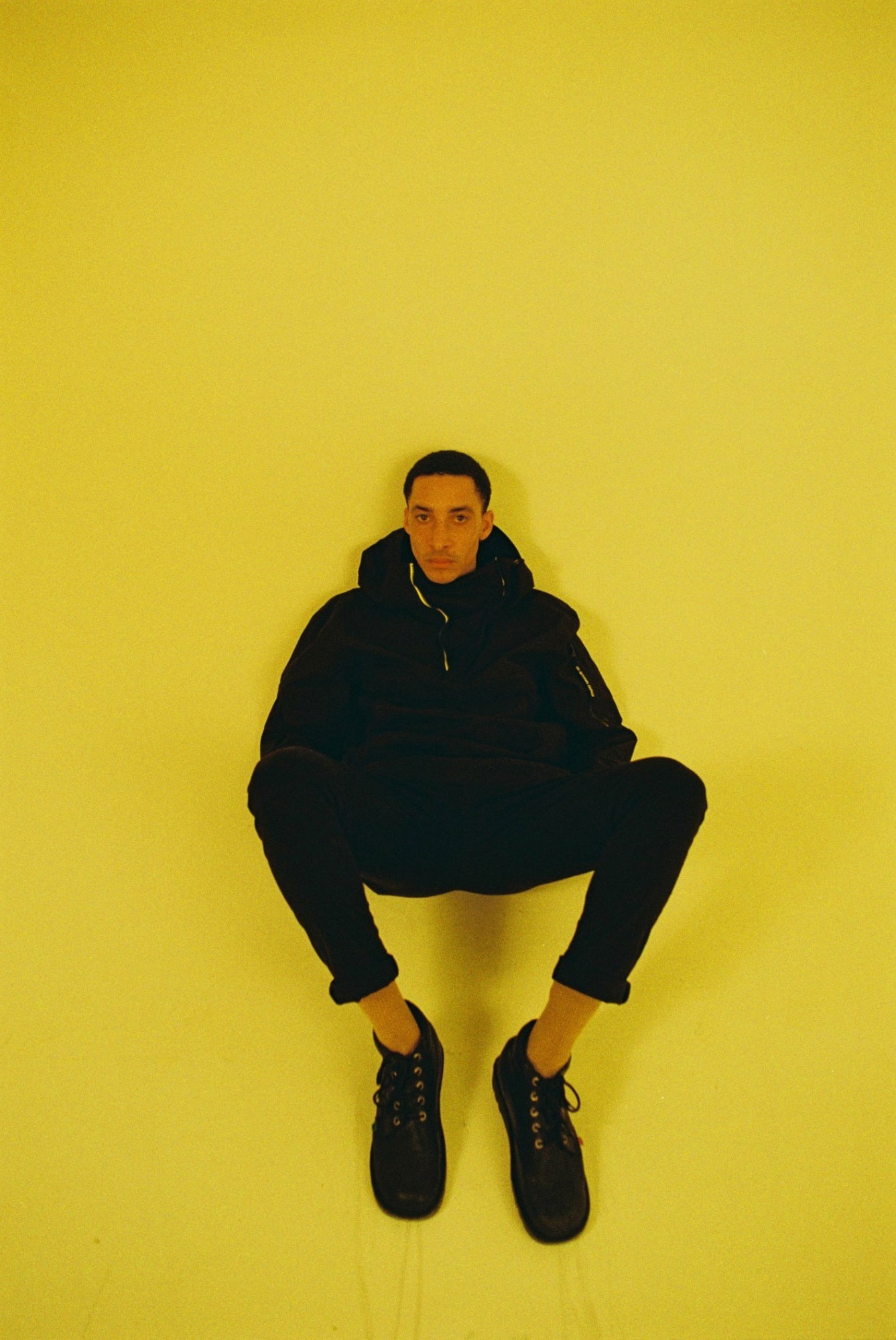
Lewis Hammond
Lewis Hammond is a painter and recent graduate of London’s Royal Academy of Art. He grew up in Wolverhampton, in the West Midlands, but has lived in London for the last 10 years. Though his works spans more than one medium, his focus is — somewhat unexpectedly in 2018 — oil painting. “I believe in the infinite possibility oil painting presents, but I have always had a drive to create in other mediums. Whether it is photography, drawing, music or writing.” His graduate show for the RA examined ideas for potential psychological states and ‘being’ — taking modern, prescient socio-political themes and reimagining them through a traditional style.
Perhaps the biggest challenge to an oil painter in 2018 is how to retain relevance in a landscape still dominated by internet-ready digital-facing art. But to Lewis, this only intensifies its appeal. “Often I think it’s an anti-position to that that makes it interesting. Slowing oneself down to experience a painting’s surface textures/technique/imagery and other subtleties I think is a highly rewarding experience. To take your time looking at art is to work in direct opposition to the speed and volume of image consumption now. I find solace and nourishment in this way of looking at paintings/art.” Text Ryan White
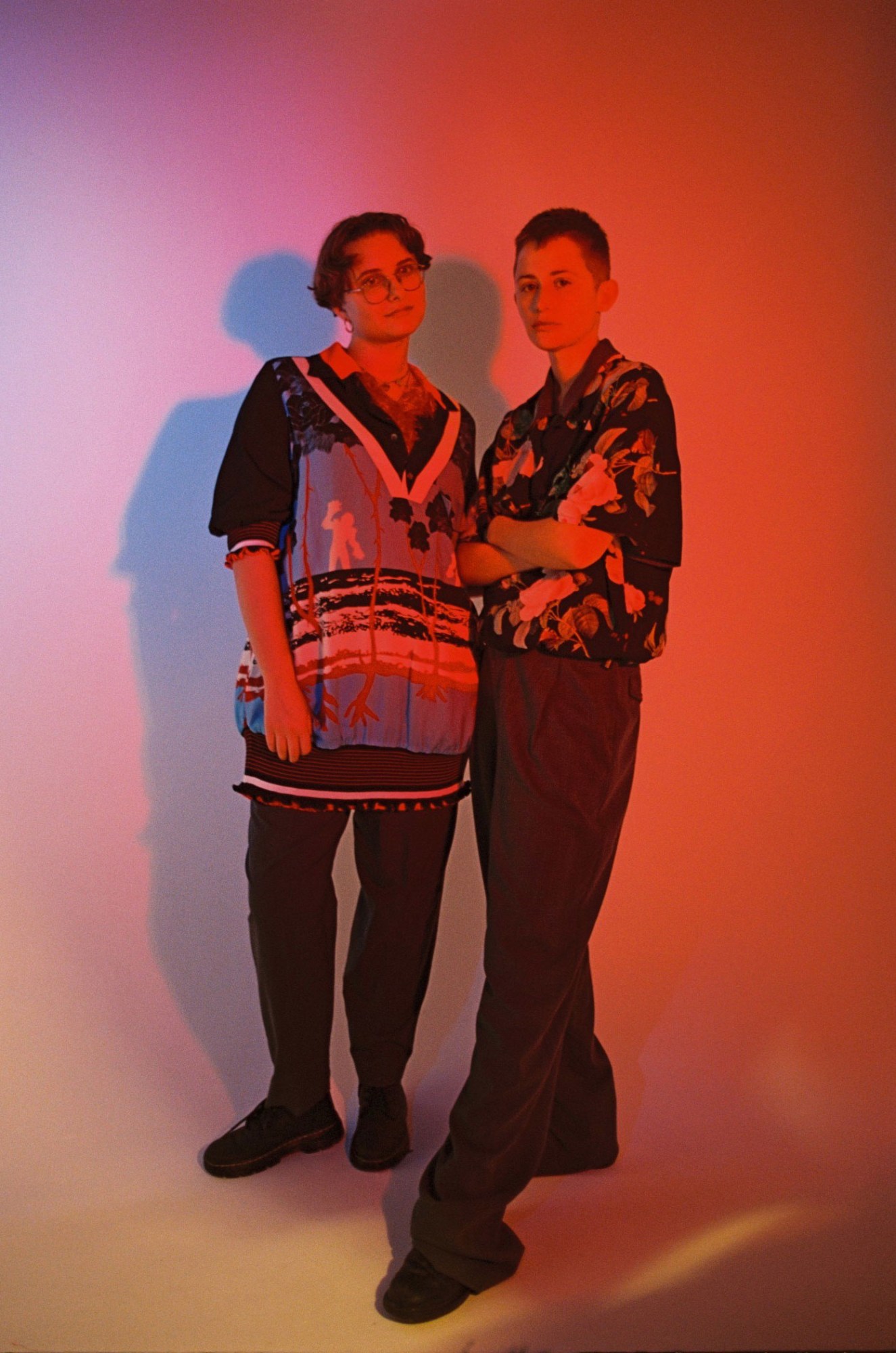
Hannah Quinlan and Rosie Hastings
It was love at first sight. Hannah Quinlan and Rosie Hastings met as BA students at Goldsmiths, on a trip to New York, and shared their first kiss at a gay bar on Christopher Street. They’ve been making some of the most vital and exciting and thought provoking artwork since. It’s taken in temporary spaces and reconstructions of gay bars, turning them into intersectional utopian spaces of radical potential and solidarity, and critiquing their commercialized and elitist iterations. Their UK Gay Bar Directory, for example, was a video chronicle documenting over 100 gay bars across Britain, filmed in a landscape within which these spaces were closing down and disappearing.
Their most recent work has seen them turn to the art of drawing, creating beautiful and intimate and tactile images of contemporary queer culture. “With all our work the politics proceeds the medium, drawing is just another form of communicating, its not inherently more or less political then other ways of working,” they explain. “We noticed that people find drawings more accessible then say a CGI image, there is something about drawing that speaks to people’s hearts. There’s a certain vulnerability that comes with putting a pencil to paper, it is an intimate process hence the relationship the work forms with the viewer is an intimate one.” Usually small in scale, and intimate in setting their 2017 exhibition at Arcadia Missa featured one huge immersive picture, The Dudes. “A massive drawing that we spent the best best part of four months working on. 2017 was the ten year anniversary of Conservative imposed austerity in the UK, The Dudes gave us an opportunity to reflect upon this.”
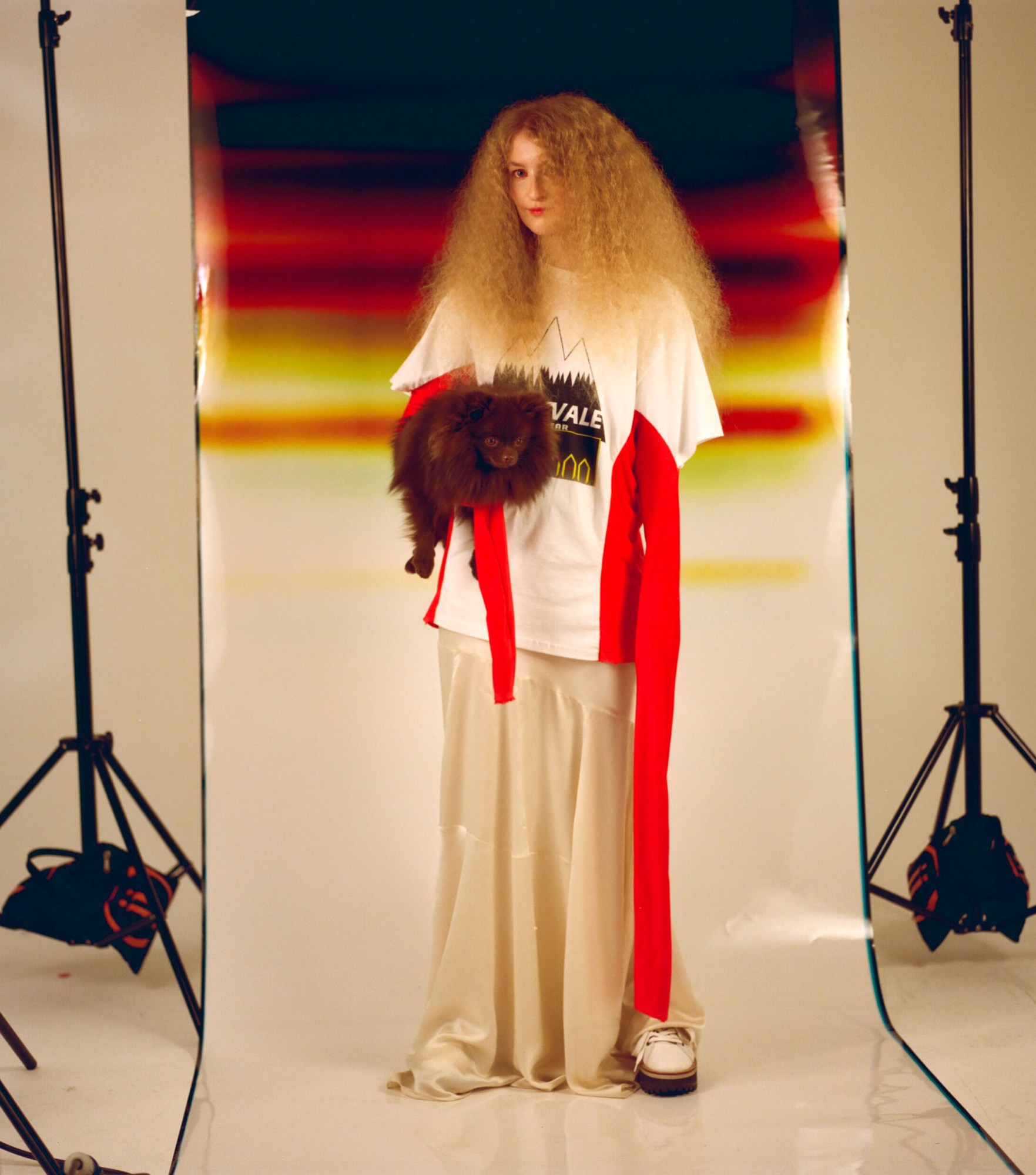
Steph Wilson
“I managed to squeeze into a £180,000 Versace catsuit during couture week in Paris last year, and reveled in the horror of the team when I told them I was on my period and I hadn’t got to grips with my menstrual cup yet.” Most people would shrivel up at the thought of bleeding onto premium designer real estate in front of fashion’s elite. Steph Wilson’s glee at the prospect just exemplifies the convention-challenging ethos underpinning her photography, the side of the camera she’s better acquainted with. Whether shooting periods in showers, fried eggs on boobs, or Marques’Almeida amongst a bunch of farm animals, her work treads the tightrope between seriousness and its antithesis. “It’s a weigh-up of getting wit, politics and aesthetic to come together in the right balance, to make a delicious cocktail of whatever the hell it is I’m doing with my life.”
With a fine art background, Steph’s segued into work with a strong fashion focus. Why? “It is everywhere and reaches everyone, whether we like it or not. It is the origin of a lot of anxiety, a bastion of eating disorders and material affectedness. But it also conflictingly supports anarchic emerging artists and designers, huge numbers of which propel new ideas and dissolve old ones,” she says. “It’s at war with itself.” So, what’s the point of art then? “It can come in all different forms and genres: very good or very bad, exciting or dull, it can make you gasp with glee or cry at the end despite putting in every effort,” Steph concludes. “Art’s a bit like sex, isn’t it?” Yes, but only if you do it right. Text Georgie Wright
Credits
Photography Liam Hart
Styling Bojana Kozarevic
Hair Hiroshi Matsushita using ORIBE Hair Care
Make-up Rachel Singer Clark using M.A.C (For Rosie, Hannah, Bianca, Greta, Lewis, Gabriella and Zarina)
Make-up Anne-Sophie Costa (For Amrou, Franziska,Gala, Sang)
Photography assistance Andy Moores
Styling assistance Louis Prier Tisdall
Hair assistance Keisuke Takano
Make-up assistance Rachael Freeman (Anne-Sophie Costa)
